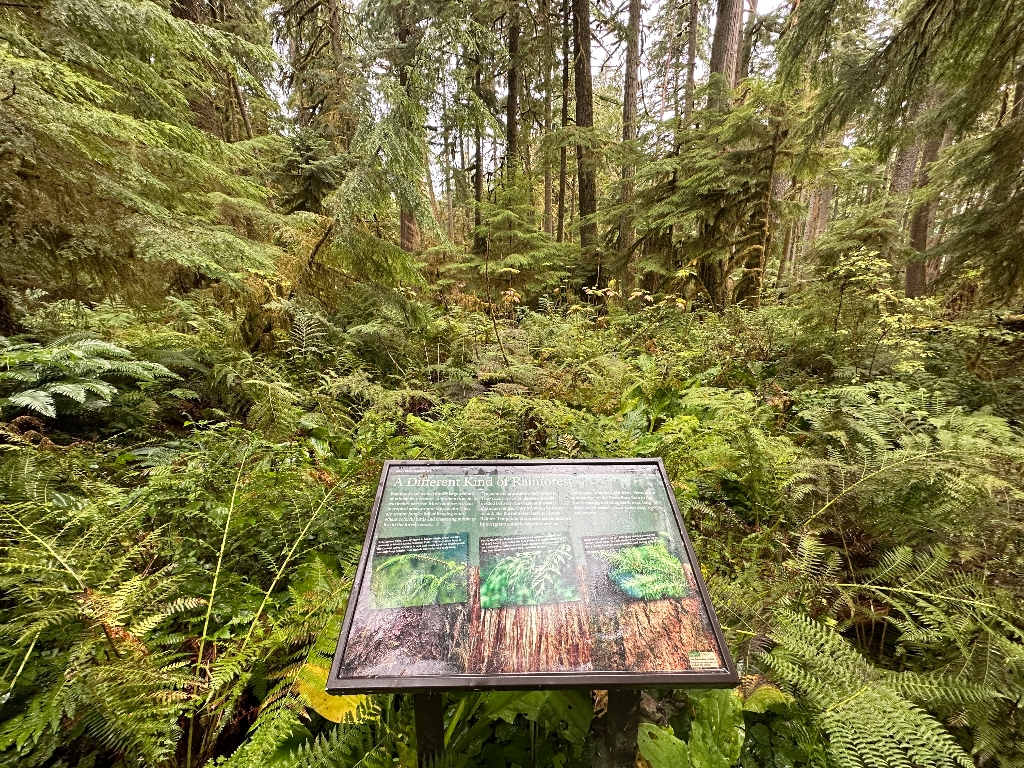
Title: A Different Kind of Rainforest
Main Text
Rainforests are named for the large amount of rainfall they receive - anywhere from 60 to 200 inches per year. Most rainforests occur in tropical areas around the equator. They are steamy jungles full of hanging vines where colorful birds and chattering monkeys live in the forest canopy. Temperate rainforests are very different. They occur in cooler climates, usually nestled between the ocean and coastal mountain ranges. Only a few can be found inland, like the rainforest here at Mount Rainier. Temperate rainforests are dominated by evergreen conifers carpeted with an abundance of mosses and ferns. Here, more animals live on the forest floor than in the forest canopy, including black bear, long- and short-tailed weasel, black-tailed deer, bobcat, and coyote.
Exhibit Panel Description
The main text stretches across the top third of the exhibit panel against a solid green background. The bottom third of the panel features a row of three photos with detail views of different types of tree bark. In the middle, half overlapping the bark photos and the green background at the top of the panel, is a middle row of photos showing three types of conifer tree branches. Each tree branch photo has a caption at the top to match each set of branch and bark photos. On the left, the caption reads: "Sika spruce trees, usually found in foggy coastal areas, are not common in Mount Rainier National Park. They only occur here in the Cabon River Valley where it is cool and moist. Look for bluish-green, one-inch-long needles that encircle the twigs and scaly bark." The caption for the middle set of photos reads: "Pacific Northwest Native Americans used Western red-cedar for so many uses it was called the tree of life. It is readily identified by its shedding, reddish-brown bark, drooping branches, and flat, lacy sprays made up of tiny, scale-like leaves." The right-side caption reads: "Douglas-firs can live up to 1,000 years and are among the world's tallest trees. You can identify the Douglas-fir by its sharp, bottle brush-arranged needles, and deeply ridged bark." A small box in the lower right corner of the panel reads "User Fee Project. Your Fee Dollars at Work. Entrance fees were used to produce this exhibit".
Visit This Exhibit Panel
This exhibit panel is located along the Carbon River Rainforest Trail, which begins at the Carbon River Entrance. The Carbon River Entrance is open year-round. NOTE: The Carbon River Rainforest Trail has been damaged by fallen trees and sections are closed. Please travel with caution.
Is there something we missed for this itinerary?
Itineraries across USA


















































